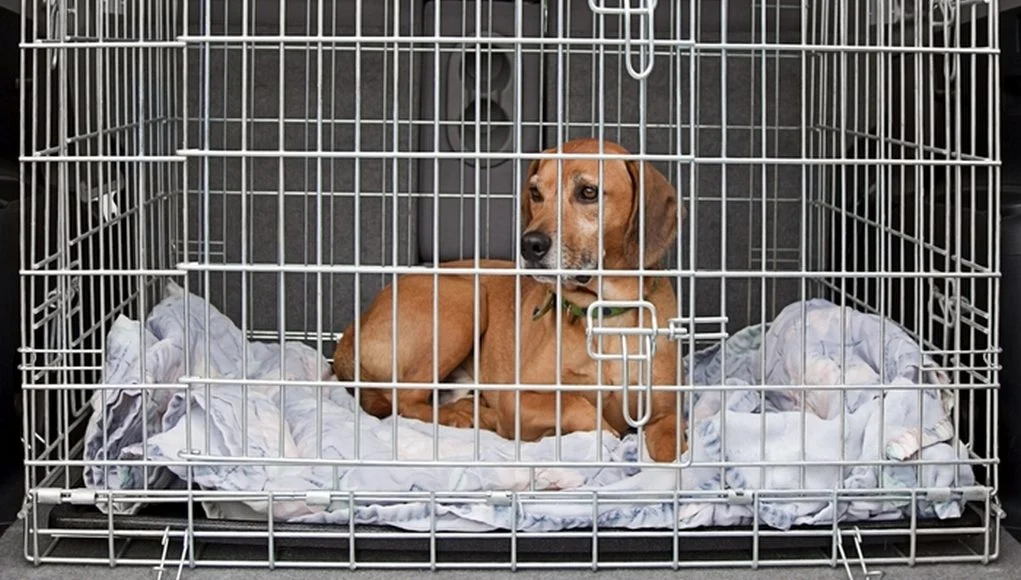Crate training is a valuable tool for raising a well-behaved and secure Pitbull. When done correctly, it provides a safe and comfortable space for your dog, aids in housebreaking, prevents destructive behavior, and offers a refuge during stressful situations.
This guide will walk you through the steps of crate training your Pitbull, ensuring a positive and successful experience for both you and your furry friend.
Benefits of Crate Training
- Safety: A crate keeps your Pitbull safe when you’re not around to supervise.
- Housebreaking: Crates aid in potty training by teaching your dog to hold their bladder.
- Prevents Destructive Behavior: It prevents your dog from chewing on furniture or other items when unsupervised.
- Comfort and Security: Dogs naturally seek out den-like spaces, and a crate can become their sanctuary.
- Travel: Crate training makes traveling with your Pitbull safer and less stressful.
Choosing the Right Crate
- Size: Choose a crate that’s large enough for your Pitbull to stand up, turn around, and lie down comfortably but not so large that they can eliminate in one corner and sleep in another.
- Material: Crates come in various materials, such as wire, plastic, and fabric. Wire crates are durable and provide good ventilation, while plastic crates offer more privacy and are useful for travel.
- Location: Place the crate in a quiet but frequently used area of your home so your dog feels part of the family while still having their own space.
Step-by-Step Crate Training
Step 1: Introduce the Crate
- Make it Inviting: Place a soft blanket or bed inside the crate and keep the door open. Put a few treats or toys inside to encourage your Pitbull to explore.
- Positive Association: Feed your dog their meals near the crate. Gradually move the bowl inside the crate so they associate it with positive experiences.
- Encouragement: Use praise and treats to encourage your Pitbull to enter the crate voluntarily. Never force them inside.
Step 2: Getting Comfortable
- Short Sessions: Once your dog is comfortable entering the crate, close the door for short periods while you’re nearby. Gradually increase the duration as your Pitbull becomes more comfortable.
- Stay Calm: Stay calm and positive when your dog is in the crate. Avoid making a big fuss when letting them out, as this can create anxiety.
Step 3: Extending Time
- Increase Duration: Gradually extend the time your dog spends in the crate while you’re at home. Start with 10-15 minutes and slowly work up to longer periods.
- Leave the Room: Begin leaving the room for short periods while your dog is in the crate. Return calmly and reward your dog for staying quiet and relaxed.
Step 4: Crate Training at Night
- Nighttime Routine: Place the crate in your bedroom or nearby so your dog feels secure. Establish a nighttime routine to help your Pitbull settle down.
- Consistency: Consistently use the crate for sleeping at night to create a routine. Take your dog out for a potty break before bedtime.
Overcoming Challenges
Whining and Barking
- Ignore Initial Whining: If your Pitbull whines or barks, wait until they stop before letting them out. This teaches them that quiet behavior is rewarded.
- Ensure Comfort: Make sure your dog has had a potty break, is not hungry or thirsty, and is comfortable in the crate.
Separation Anxiety
- Gradual Desensitization: If your Pitbull shows signs of separation anxiety, start with very short crate sessions and gradually increase the time. Provide comfort items like a piece of your clothing.
- Professional Help: In severe cases, consider consulting a professional dog trainer or behaviorist.
Maintaining Positive Crate Experiences
- Regular Use: Continue to use the crate regularly even after your Pitbull is fully trained. This keeps the crate familiar and prevents regression.
- Never Use for Punishment: Never use the crate as a form of punishment. This creates negative associations and can lead to fear and anxiety.
- Keep it Positive: Continue to associate the crate with positive experiences by giving treats, praise, and toys.
Conclusion
Crate training your Pitbull requires patience, consistency, and positive reinforcement. By following these steps and addressing any challenges calmly, you can create a safe and comfortable space for your dog.
Proper crate training will not only help with housebreaking and preventing destructive behavior but also provide your Pitbull with a secure and private haven they can call their own. Remember, the key to successful crate training is making it a positive and rewarding experience for your Pitbull.


Leave a Reply